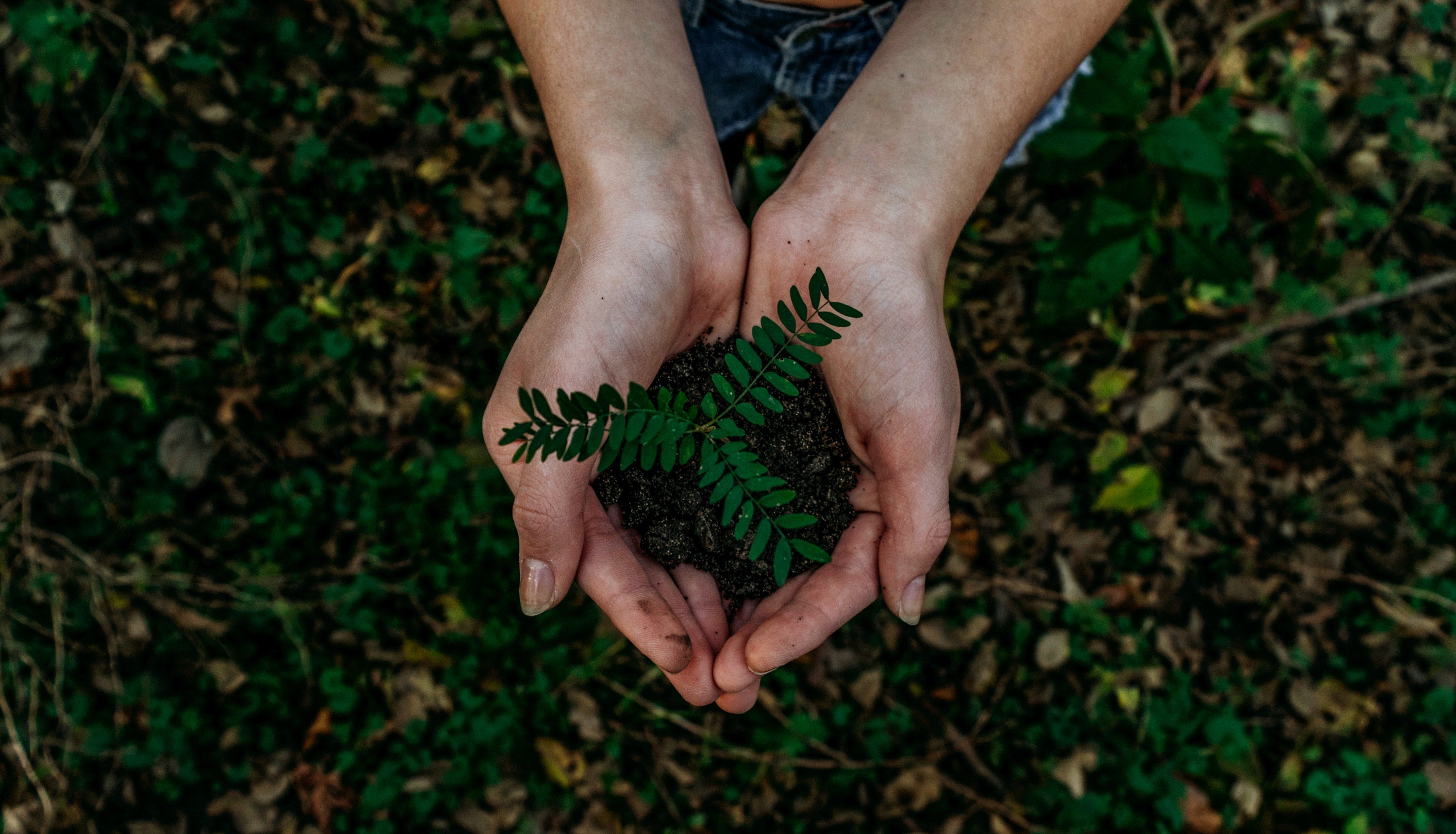The effects of climate change are seen throughout the world. From devastating droughts to harsh floods, there are many reasons to become an eco-conscious consumer. While it’s easy to think one person can’t make a difference, you really can help the environment by buying eco-friendly products.
But what does “eco-friendly” mean, and why is it important? Here, we’ll help you understand “green” terms and how to identify eco-friendly products. Plus, we’ll give you advice on how to live a more eco-conscious lifestyle, even when eco-friendly products aren’t available.
What Does "Eco-Friendly" Mean?
The term "eco-friendly" literally indicates that something causes little or no harm to the environment. But what are eco-friendly products exactly? And what evidence is required to back up eco-friendly claims?
The fact is, “eco-friendly” is a broad term that can indicate any number of environmentally friendly conditions. This can be confusing for environmentally conscious consumers who want to reduce their carbon footprint. Fortunately, there are government organizations that help regulate products and services labeled as “eco-friendly.”
How the Term “Eco-Friendly” Is Regulated
The Federal Trade Commission
The Federal Trade Commission (FTC) protects consumers from deceptive marketing and regulates the terms “eco-friendly,” “non-toxic,” “biodegradable” and “recyclable.” Per their regulations, any “eco-friendly” or “green” claims on products are lawfully required to be true. Their Green Guide explains how companies can earn an eco-friendly rating.
For a product to be marketed as eco-friendly, it must state a specific environmental benefit. These benefits may include:
- Carbon offsets from production methods
- The use of recyclable, compostable or degradable materials that are non-toxic to the environment
- The use of renewable energy during manufacturing
- A reduction of waste and toxicity
Whenever a company makes eco-friendly claims about its products or services, they must qualify these claims with specific statements and scientific evidence. For instance, a company can’t advertise carbon offsets as a benefit if an existing law already requires a carbon-offset production method.
Another example is if a product is made with at least 40% recyclable materials. It can be labeled as eco-friendly, but the packaging or company’s website must specifically state that the product is “made with 40% recyclable materials,” rather than broadly stating, “made with recyclable materials.”
The Environmental Protection Agency
Beyond the FTC, the Environmental Protection Agency (EPA) exists to enforce environmental regulations and protect human health. They’ve developed different ecolabels that address environmental issues, from recycled materials to energy efficiency. These ecolabels help consumers identify more eco-friendly products and services.
Ecolabels are awarded by third-party organizations. Products can receive an ecolabel based on environmental performance standards met in any stage of a product’s lifecycle. This includes how it’s manufactured, transported and disposed of, and how it’s used by consumers. To receive an ecolabel, products must meet specified criteria for environmental performance as set by the EPA.
How Can You Tell if a Product Is Actually Sustainable?
One of the most effective ways to ensure you’re shopping sustainably is to look for official ecolabels developed by the EPA. These labels include:
- ENERGY STAR®: Products can earn an ENERGY STAR label when they meet the EPA’s energy-efficiency specifications. Energy-efficient products deliver cost savings directly to consumers by lowering their energy consumption.
- Safer Choice: The Safer Choice label is used on products with safer chemical ingredients that minimize the impact on human and environmental health.
- Significant New Alternatives Policy (SNAP): The SNAP program identifies and evaluates substitutes for ozone-depleting substances. Specifically, it regulates these substitutes for chemicals used in refrigeration, air conditioning, cleaning solvents, aerosols, adhesives and fire suppression.
- Comprehensive Procurement Guideline (CPG): Buying products with a CPG label encourages the use of recycled materials to produce new products. Designated categories of products for a CPG label include construction, paper, landscaping, transportation, vehicular and nonpaper office products.
- WaterSense: WaterSense certified products help consumers save water, which also helps them lower their water costs. Water-efficient products with this label include showerheads, faucets, toilets and outdoor sprinklers.
Remember that just because a product is labeled “eco-friendly,” it doesn’t necessarily mean it's 100% eco-friendly. You’ll need to read the product's information carefully to determine what the “eco-friendly” label actually means.
For instance, one eco-friendly product may be made with 60% recyclable materials. Another may cut down on hazardous waste due to its modified production process. Buying sustainably may take some research, but it’s the best way to guarantee you’re investing in eco-friendly products.
Keep an Eye Out for "Greenwashing"
“Greenwashing” refers to products that are falsely marketed as “eco-friendly” or as having environmental benefits. This includes any misleading, exaggerated or unsubstantiated claims of a product or service being environmentally friendly.
Despite regulations set by the FTC and EPA, greenwashing can happen. To avoid greenwashed products, look for official ecolabels on a product’s packaging. You can also check out a brand’s website or social channels to see if they provide explicit scientific evidence that supports their eco-friendly claims.
Similar Terms to Know
The terms “green” and “eco-friendly” are often used interchangeably. But there are also a lot of other environmentally-friendly words and phrases in the marketing universe.
Let’s break down the meaning of some common green terms:
- Eco-conscious: The term eco-conscious describes any person or company concerned about the environment. While a product can’t be eco-conscious, a company may list being eco-conscious as one of its values.
- Sustainable: In the broadest sense, sustainability focuses on creating and upholding conditions where humans and the environment can productively coexist. This includes providing environmentally and economically equitable circumstances that support current and future generations.
- Conservation: As related to the environment, conservation refers to the preservation and protection of natural resources. It can include the prevention of environmental waste, destruction and exploitation.
Why Is it Important to Buy Eco-Friendly Products?
At this point, you might be wondering how eco-friendly products specifically help the planet. Here are some ways these products impact the environment:
- They promote the use of safer chemicals to reduce toxic exposure
- They encourage the use of renewable resources and energy, which can help preserve our planet’s natural resources
- They impact the amount of air pollution and water pollution
Consumer Benefits of Going Green
We know that buying eco-friendly helps the planet. But what are the impacts of going green on our everyday lives? Let’s explore a few of these benefits.
Cost Savings
While the upfront cost of eco-friendly products can seem expensive, they can actually help you save money in the long run. Many eco-friendly products encourage long-term use and energy efficiency, which reduces your consumption and purchasing of resources.
For instance, a reusable water bottle can be a one-time purchase, whereas buying individual bottles of water over your lifetime will cost you more money. Similarly, buying a water-efficient showerhead can reduce your monthly water bill.
Living Healthier
One of the biggest benefits of eco-friendly products is their potential impact on human health. Air pollution, toxic exposures and water pollution can all affect our well-being. Greener products can help reduce these impacts and minimize humans’ exposure to harmful elements.
Giving Back to the Earth
At the end of the day, it can feel great to make eco-conscious decisions. By supporting eco-friendly products, you can experience a sense of confidence and satisfaction knowing you’re supporting the environment.
Examples of Eco-Friendly Products
- Atlantis Headwear Sustainable Recycled Cap: This cap is made with 100% Certified recycled polyester, promoting the use of recyclable materials.
- Alternative Earthleisure Modal Triblend Tee: The affordable Earthleisure Tee is designed for long-term use, created with a fabric blend of modal, cotton and recycled polyester.
- The North Face ThermoBall Eco Hooded Jacket: Insulated and lightweight, this stylish jacket is made from post-consumer recycled content and offers a long lifespan.
- Econscious 6.8 oz. Hemp Market Tote: Resilient and sturdy, this eco-friendly tote bag is partially made from hemp, which is a biodegradable crop that reduces water consumption.
Advice on How to Become More Eco-Conscious
As you explore ways to become more eco-conscious, remember that you don’t have to overhaul your entire life. It’s best to explore your options and focus on making small, sustainable changes that work for you.
Besides shopping eco-friendly, here are some other eco-conscious steps you can take:
- Find ways to conserve energy: From turning off lights to carpooling, try little ways to reduce your energy consumption. You may even want to invest in energy-efficient products, like faucets and lightbulbs.
- Don’t waste food: The USDA estimates that about 30-40% of food is wasted in the U.S. Considering how many resources go into producing our food, this greatly impacts both the environment and the economy. Try incorporating conscientious meal planning into your daily life to avoid tossing out food.
- Focus on recyclable and renewable products: Whether you’re investing in solar panels or simply cut out the use of plastic, focus on products that reduce the impact on our planet’s resources.
What if I Can’t Find an Eco-friendly Product?
Sometimes buying an eco-friendly product isn’t possible. And that’s okay! You can still take an eco-conscious approach by asking yourself the following:
- How much use will I get out of a product? Reducing consumption helps minimize our environmental impact. Buying products that you’ll regularly use for the long-term can help scale down the use of natural resources.
- Instead of replacing something, can I fix it? Rather than tossing something out, see if you can repair it. For instance, you might be able to replace a zipper on a jacket or replace the leg on a coffee table.
- Is this product durable? Purchase long-lasting products whenever possible. Not only does it reduce your consumption, but you also might save money in the long run.
Check Out Customized Eco-Friendly Products From Thread Logic
Thread Logic is here to help with your eco-friendly decisions. Many of our products are made from recyclable materials to minimize the impact on the Earth’s natural resources. Plus, our durable clothing is designed for long-term use to help reduce consumption.
Explore our top eco-friendly shirts today to get started on your sustainability path.


